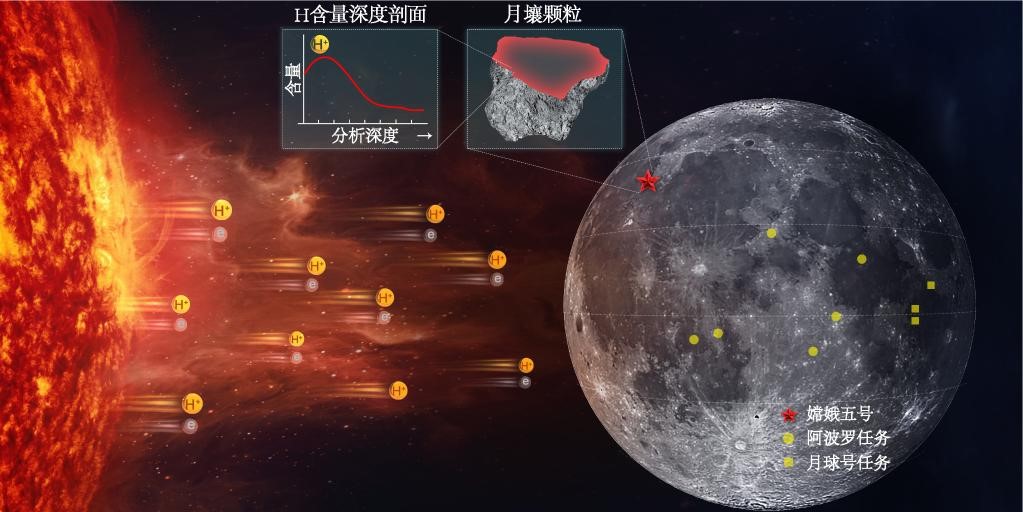DM Monitoirng
BEIJING: By studying lunar samples retrieved by the Chang’e-5 mission, Chinese scientists found that lunar soil grains retain more solar wind-implanted water at the middle latitude region than previously thought.
Based on this finding, the scientists predict that there is a large amount of water resources available for utilization at the high latitude region of the moon. Scientists had previously discovered the presence of surficial water on the moon. They believed that solar wind implantation, volcanic outgassing, and asteroid/comet impacts are likely to be important sources of surficial water on the moon.
But how does water reach and remain on the moon? How much water is in the lunar soil? How is the water distributed spatially? A study of the lunar soil samples returned by China’s Chang’e-5 mission has shed new light on these questions.
The research team, jointly led by scientists from the National Space Science Center (NSSC) and the Institute of Geology and Geophysics (IGG), both under the Chinese Academy of Sciences (CAS), published the new findings on Tuesday in the latest edition of the journal Proceedings of the National Academy of Sciences. Lin Yangting, a researcher at the IGG who led the study, explained that the water they refer to is not water in the usual sense, but the structural water found in soil grains. Since hydrogen is one of the main components of water, the hydrogen concentration is usually used to express the water content.
The research team selected 17 lunar soil grains, including olivine, pyroxene, plagioclase and glass, from Chang’e-5 samples and carried out experimental analysis of the hydrogen content and isotopes using a newly-developed profiling technique on a nanoscale secondary ion mass spectrometer. The scientists found that the average water content in the topmost 0.1-micron zone of the lunar grains is 0.7 weight percent, rather high for nonaqueous minerals. They then proved through the deuterium-hydrogen ratios that the water on the lunar surface was solely derived from the solar wind.
“The hydrogen ions emitted from the Sun reach at an average speed of 450 kilometers per second and they hit the surface of the lunar soil grains like bullets.”






